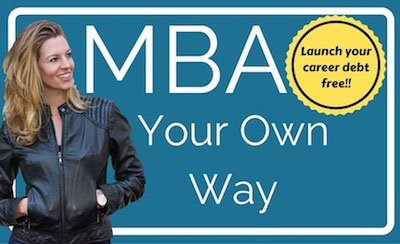by Laurie Pickard | Jan 5, 2018 | Community and Networking, Thoughts on Higher Ed and Life
Join me in the #100DaysOfBizEd Challenge.
Have you heard of the 100 Days of Code Challenge? This incredible concept leverages the power of social media to help people stay motivated to learn something new. People who take on this challenge pledge to code for 1 hour a day for 100 days. They make a public commitment on Twitter using the hashtag #100DaysOfCode. Part of the challenge also involves encouraging others who have taken on the challenge, using social media.
The 100 Days concept works for any endeavor that requires practice and consistency. Now, in addition to #100DaysOf Code, there are many challenges using this methodology, including #100DaysOfWriting, #100DaysOfFitness, and even #100DaysOfKindness.
If you’re new to this site, I blog about my project to replicate a traditional MBA using free and low-cost resources from the internet (primarily MOOCs). I finished that project some time ago, and I even have a book out on the subject of doing a self-directed business education.
Now I’m feeling a need to refresh some of my skills and to revisit some topics that I didn’t fully cover while I was doing my No-Pay MBA. Also, it’s January and I’m making goals for the New Year. Two of my goals for this year are 1) to become an Excel power user, and 2) to get better at social media marketing.
My goals for the year:
1) Become an Excel power user.
2) Get better at social media marketing.
How the #100DaysOfBizEd Challenge Works
This month, I will be starting my own challenge, 100 Days of Business Education. I’m using the hashtag #100DaysOfBizEd, and I’m adopting the same rules as the #100DaysOfCode Challenge.
1. I pledge to work on my business skills (primarily Excel and social media marketing in my case, but you could work on any business-related subject) for 1 hour per day for the next 100 days.
2. I will tweet my progress each day with the #100DaysOfBizEd.
3. I will use social media to encourage others who join the challenge.
Will You Join Me?
Do you have business education goals you are trying to reach in 2018? If so, please join me for the #100DaysOfBizEd Challenge!
Click here to tweet your commitment to joining the challenge.
by Laurie Pickard | Aug 5, 2016 | Community and Networking
Hillary Strobel got a debt-free business education and built the business of her dreams.
Three years ago, Hillary Strobel ditched a dead-end job to follow a childhood dream of creating a publishing company that could share inspiring stories. When she took that leap, she had some publishing experience but no training on how to run a business. So Hillary used MOOCs and a variety of other online resources to pursue the business education that could turn her dream into a reality. As one of the inaugural members of the No-Pay MBA Network, she has earned a world-class business education and built a global network.
Today, she runs The Flyways, a Social Impact Publishing house and a registered Benefit Corporation, which donates 25% of profits to social justice causes around the world. On the side, Hillary provides consulting services to other business owners looking to develop their own social impact programs.
I recently spoke with Hillary as she reflected on her No-Pay MBA experience.
No-Pay MBA: Can you take us back to the moment when you chose to pursue a No-Pay MBA? Why did you choose this method of study for your business education?
Hillary Strobel: Last summer (2015), I was taking a MOOC on gamification design, just for the heck of it. One day at my father’s office, he happened to see me on the computer taking the class. He had never heard of MOOCs before. When I told him that many of them are developed and offered through universities, he wondered if it was possible to get a degree using these classes. So I began to do some research and came across the No-Pay MBA blog. Within minutes of reading it, I knew it was for me.
My daughter wasn’t quite a year old at the time, and I knew I didn’t want to put her in full-time day-care, but that I also needed an education to get my ideas off the ground as legitimate businesses. I’m an ideas person, but I didn’t have the formal training to make most of those ideas sustainable in the long run. So the opportunity to get a stellar business education, from some of the world’s best schools, on the specific topics that would best serve my ideas, on my own schedule, was too good to pass up. I was able to take all of my classes while my daughter was napping or after she had gone to bed.
For someone in a vulnerable situation like myself (a single, working class mother), this vehicle for education is literally like manna from heaven. Many amazing things that are available to me today, because of this resource, may never have been attainable through more “traditional” avenues.
I’m an ideas person, but I didn’t have the formal training to make most of those ideas sustainable in the long run.
NPMBA: What has been the biggest surprise about your MOOC-based education?
HS: I’d say the biggest surprise was how easy it was to do this. I finished my education in slightly less than one year, while raising my daughter alone and simultaneously building a business. The classes were just across-the-board fun. The self-paced nature of the education helped quite a bit, as did the fact that I could take the courses I wanted.
NPMBA: You’ve taken quite a few courses on social entrepreneurship. How did you find enough high-quality, advanced content on that topic?
HS: At first, I just did Google searches for any class I could find on the subject. There were some excellent resources, like the European Business School, Germany’s Social Innovation course on Iversity and +Acumen’s Global Social Entrepreneurship on NovoEd. Eventually, I hit pay-dirt when I found a program on NovoEd for Social Sector Leadership, which is a collaboration between PhilanthropyU and UC Berkeley Haas School of Business. This consisted of seven courses, including the best finance class I’ve ever taken (Financial Modeling for the Social Sector). It also garnered me a certification, which capped off my business education.
NPMBA: How have you incorporated networking into your studies?
HS: Members of the No-Pay MBA Network have become some of my closest friends and most trusted professional advisors/partners. I’ve also been able to co-create a mutually supportive mastermind group with some members as we progress into similar career plans.
In a typical brick and mortar b-school setting, it’s more likely that you would meet people in your own field or in similar straits, but through No-Pay MBA, I’ve met people from around the world who are working in ways that I never would have imagined. For example, in the process of taking the course Beyond Silicon Valley, I met one of the course assistants, a 74-year-old woman who is retired from a corporate career and is now building a second career as a mentor to female entrepreneurs. She has made many things possible for me, including introducing me to another woman who was my book-writing accountability partner, which in turn has led to a spot as a presenter and a position on the Advisory Executive Committee at the Women Economic Forum in 2017. All of this was possible from taking a single course and meeting the right person.
Taking so many classes also made it possible to be invited to join +Acumen’s newly formed Acumen Corps. This networking opportunity was really made possible by my own drive to take a large number of +Acumen’s courses and show up in a big way for them. The Acumen network will make my newest business project possible, as it is based on a +Acumen class I took, and I will be building on relationships I have with individuals in the Corps and the organization itself.
All of this was possible from taking a single course and meeting the right person.
One thing I’ve learned is not to waste any networking opportunity! Everybody has something to offer, so go into the room knowing that anyone you meet can help you in some way, and vice versa. Often, a random encounter can lead to something amazing, even if it’s months down the line.
NPMBA: What advice do you have for people pursuing independent business studies or contemplating their options for business education?
HS: I estimate, truthfully, that I’ve spent less than $100 to obtain everything from this business education. Pretty much every course I took was free. I paid for one workshop and one course certificate in the course of the entire year. I cannot stress enough, as a single parent, how incredible it is to be able to say my education was so inexpensive, along with the fact that I didn’t have to pay for day-care or transportation.
Pursuing independent studies means motivating yourself and driving your own car. You might have a destination in mind, but the road getting there is going to be curvy and bumpy and full of potholes. You might even find yourself on a totally different road than the one you started out on. But what a glorious time getting there, if you’re willing to travel like this!
Another thing I would recommend is a mixture of courses, workshops, real-life projects, internships, and mentorship experiences. It’s quite unlikely that you’re going to develop a robust skill set via a single learning methodology.
One of the best pieces of advice I ever received was this: “Don’t yell at the seeds you’ve planted to hurry up and grow! Let them sprout and become their fullest embodiments at the pace they are intended to grow. Because everything you plant will indeed grow someday.”
Learn more about Hillary’s education by checking out her portfolio. You can also find her on Facebook, Instagram, Medium, and LinkedIn.
Do you have a story to share about a self-directed business education?
No-Pay MBA is always looking for inspiring stories of learner success.
Let us know in the comments below or reach out through the contact page.
by Laurie Pickard | Dec 9, 2015 | Community and Networking
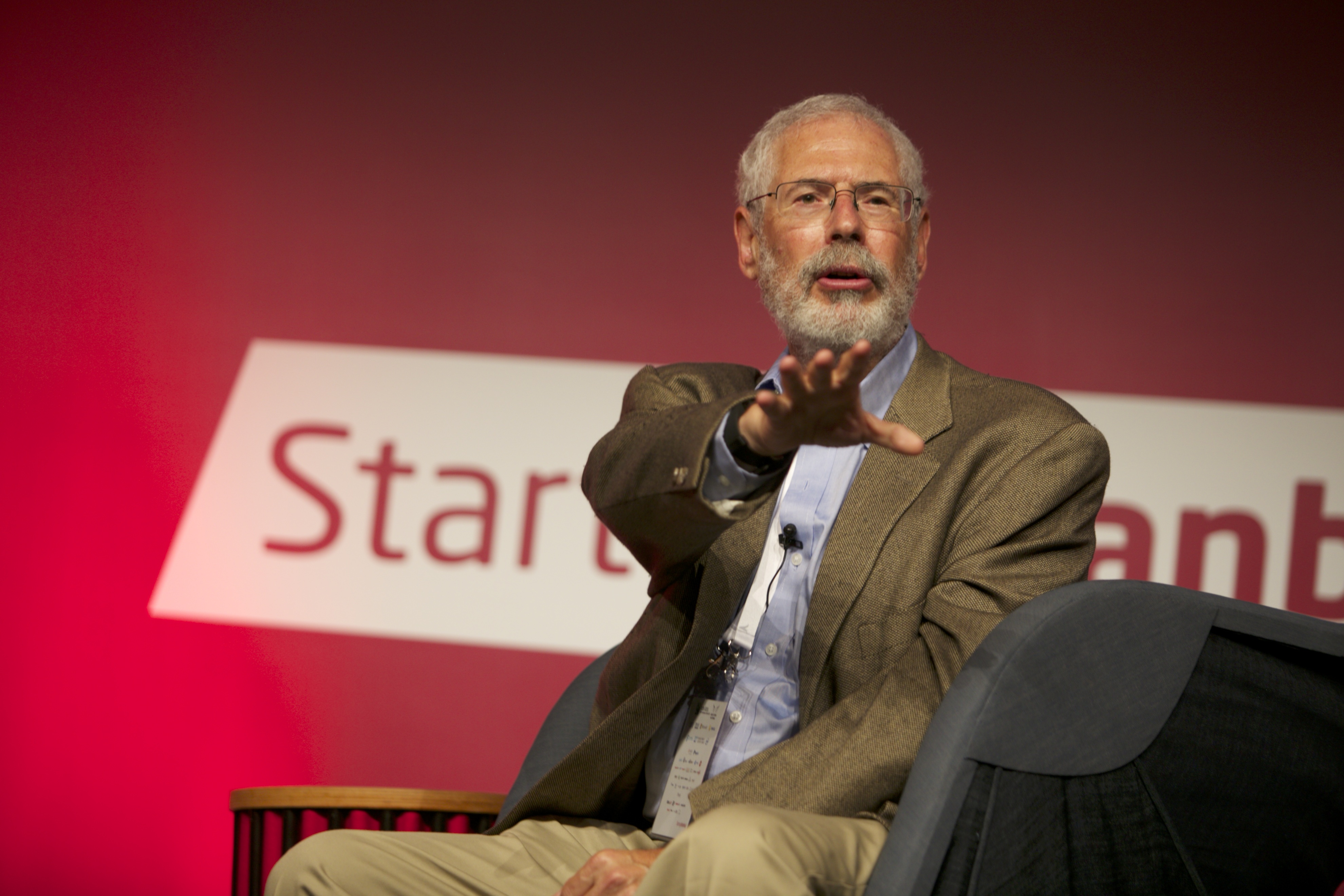
“One of the key characteristics of an entrepreneur is that you tend to show up a lot.”
This was one of the first things Silicon Valley entrepreneur Steve Blank said to the members of the No-Pay MBA Network during a recent video call. He was explaining the genesis of How to Build a Startup, his course on Udacity’s platform, and telling the story of how he became one of the first professors to teach a massive open online course.
“I was trying to solve a problem,” he said. At the request of the National Science Foundation, he was teaching his Lean Launchpad course to a geographically dispersed group as a series of web lectures, when it occurred to him that he might be able to enhance the student experience by pre-recording lectures and adding drawings to them. Once the lectures were recorded, it would be easy to share them with many more people than the small group he was teaching under the grant.
Coincidentally, friend and fellow faculty member Sebastian Thrun was at that time leaving Stanford to found Udacity. The two decided to team up to offer How to Build a Startup as a Udacity course. “Full disclosure, I also handed him one of his first checks,” Blank said. Thus, he became both an early investor and an early participant in the MOOC experiment by doing what he has done throughout his career - showing up, solving problems, and saying yes.
“One of the key characteristics of an entrepreneur is that you tend to show up a lot.”
These three themes - showing up, solving problems, and saying yes - are more than the formula for Blank’s success; they are innate. Long past the point when he has earned the right to say no, Blank continues to say yes. This generosity of spirit is evident in all of his work - from his website, where he shares a treasure trove of resources, including blog posts, video, audio, and presentations; to his radio show “Entrepreneurs are Everywhere,” in which he interviews entrepreneurs from all walks of life; to his willingness to talk with a small group of students from among the 300,000 who have taken his free online course.
As one of those students, in a way I felt like I already knew Steve Blank, even though I was meeting him for the first time. After all, I had spent some formative hours with him in the online classroom learning how entrepreneurship works. And yet, nothing compares to being face-to-face (albeit virtually) with someone whose work you admire. In person, Blank is just as warm and candid as he is in the course. He curses, he jokes. He thinks fast and doesn’t waste time, so he sometimes cuts people off - not to be rude, but just to get to the point. Talking with him was thrilling and invigorating.
From the MOOC experience, our discussion turned to corporate innovation. Network members raised questions about how to become involved in intra-preneurial activities at work, and Blank shared suggestions and insight from his exploration of this topic over the past several years. We talked about the value of business school - a set of foundational skills and tools and a personal network - and about whether it’s better to go to business school or start a company - depends on how you learn best.
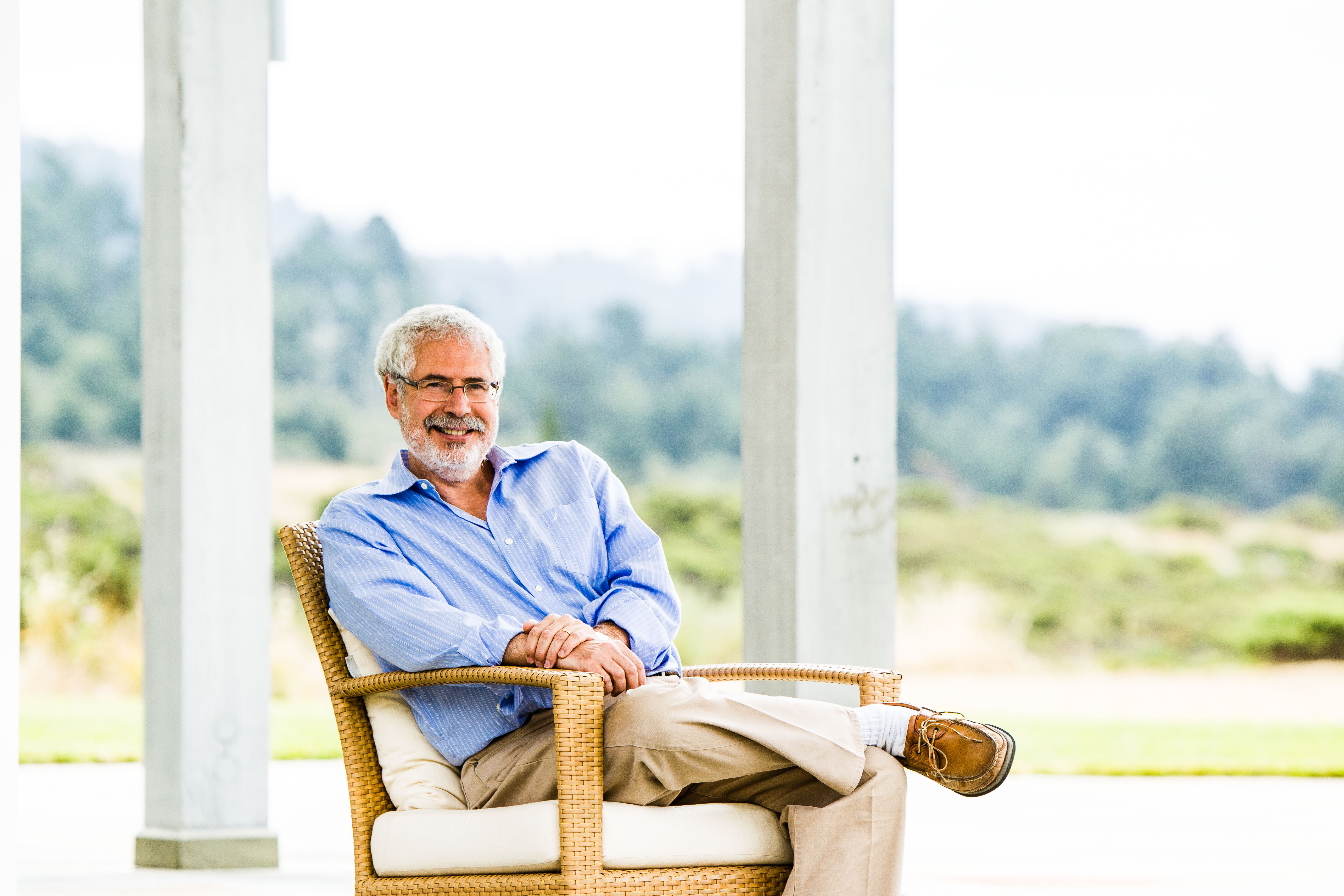
When one person asked about how to form a founding team, Steve waxed poetic about startup founders. “The company to them is not a job, it’s a calling. The founder is closer to an artist than any other profession. Startups are not run by accountants; they’re run by artists. And by artists I mean composers, sculptors, writers, people who see things that other people don’t, and people who have a passion burning inside that they want to share with the rest of the world. Those are the people who build successful startups. [A founder] creates a reality distortion field around them, so other people can see things that are not yet there.”
“Startups are not run by accountants; they’re run by artists.”
Finally, we talked about this current moment in technology, education, and entrepreneurship. Again, Blank grew philosophical. “This is one of the best times ever [for entrepreneurship]. This is like living in Florence in the Renaissance or like being a writer in Paris at the turn of the 20th century. Very few times and places have existed like this in the world. We should enjoy the hell out of it. It won’t last, but while it’s here, we ought to just remember we were part of it.”
To learn more about Steve Blank’s work, check out his website. His Startup Tools, slides and videos, and many other resources appear as tabs across the top of the site. You can find the How to Build a Startup course here.
If you’re interested in joining the No-Pay MBA Network, you can learn more about it here.
by Laurie Pickard | Sep 7, 2015 | Community and Networking, MOOC MBA Design

If you’ve been following this blog and the No-Pay MBA project, you may be curious about how things are going with the No-Pay MBA Network that launched in July.
If you’re just finding us, here’s the 5-second recap: My name is Laurie, and I’m using MOOCs to get an education equivalent to an MBA. I recently launched a networking service for MOOC business students, to replicate what many people see as the most valuable component of a traditional MBA program.
The network has been going for about two months now, and I am greatly enjoying watching it take shape. The first cohort of the network is in many ways a pilot. Many of the members of the first cohort of the network are themselves interested in entrepreneurship; part of the appeal of being part of the network in its early stages is getting to help build it. In the short time that we’ve been working together, this group of 35 people has already greatly improved upon the initial offering, suggesting and implementing more and better ways to collaborate.
Bootstrapping a business education
In many conversations I’ve had with members of the network, the word that seems to best fit what we’re doing is “bootstrapping.” For those less familiar with the American vernacular, “to pull oneself up by one’s own bootstraps” is an expression commonly used to talk about a process of self-betterment undertaken without a lot of outside help.
Pulling oneself up by one’s bootstraps is not a new concept; according to Wikipedia, Americans have been using the term since at least the mid-1800s. More recently in business, bootstrapping has come to mean starting a business without external help or capital.
I like to think of the No-Pay MBA Network as a bootstrap model of business school. The members are helping to pull each other up without the external help of an institution. Together, we’re undertaking a process of self-betterment and helping each other to reap the benefits of an MBA education without going thousands of dollars into debt in traditional MBA degree programs.
The bootstrap network effect
One important way we’re helping each other is by acting as one another’s classmates in a virtual business school environment. Network members are connecting through various channels of communication, working on course projects together and helping one another to stay motivated.
Just as in a regular MBA program, there is great value in cultivating a peer network, building strong connections with the future founders and chief executives who are studying alongside you. By connecting with one another early in your careers, the hope is that you will pull one another along, building and sharing in one another’s success. Maybe you join forces and found a company as startup entrepreneurs. Perhaps you or your friend winds up working at a company that the other finds interesting and can offer a personal recommendation. Your peer network is a long-term investment whose value grows over time.
As one member of the No-Pay MBA recently put it, “Over time, our network could lead to successful startups - who knows?! We should always dare to keep on dreaming big, and each and every member is striving to make these dreams a reality as much for his/her fellow No-Pay MBA members as for him-/herself!”
The No-Pay MBA learning laboratory
There is a second way the No-Pay MBA Network is bootstrapping a business education, something I didn’t totally foresee when I first designed the network.
I’m a big believer in hands-on learning. In my opinion, hours spent in the classroom (whether brick-and-mortar or virtual) don’t add up to much unless you’ve had the chance to put your skills into practice. For me, first this blog and now the business have served as my laboratory (in addition to several other hands-on experiences, e.g. as described here and here).
Now, in addition to the benefits of having a community, network members are also finding ways to use No-Pay MBA as a place to practice the skills they are learning in online courses and elsewhere.
One small team is working with me on A/B testing, putting into practice an important concept in digital marketing. Another team is applying concepts from a course on user experience to improve the members area of the website. All of us are honing our skills in project management, coordinating geographically disparate learning and project teams using a variety of tools. As time goes on, network members will continue to work on projects with one another as of honing their new skills.
One of my goals for the network is to have every member walk away from the experience with a strong portfolio of work to complement and add credibility to their studies.
Much more than MOOCs
So, while MOOCs are the backbone of the No-Pay MBA curriculum, the real value No-Pay MBA is providing to its members (even the early adopters in the first cohort) is in networking and connecting members with hands-on learning experiences. So far, it’s going just fine.
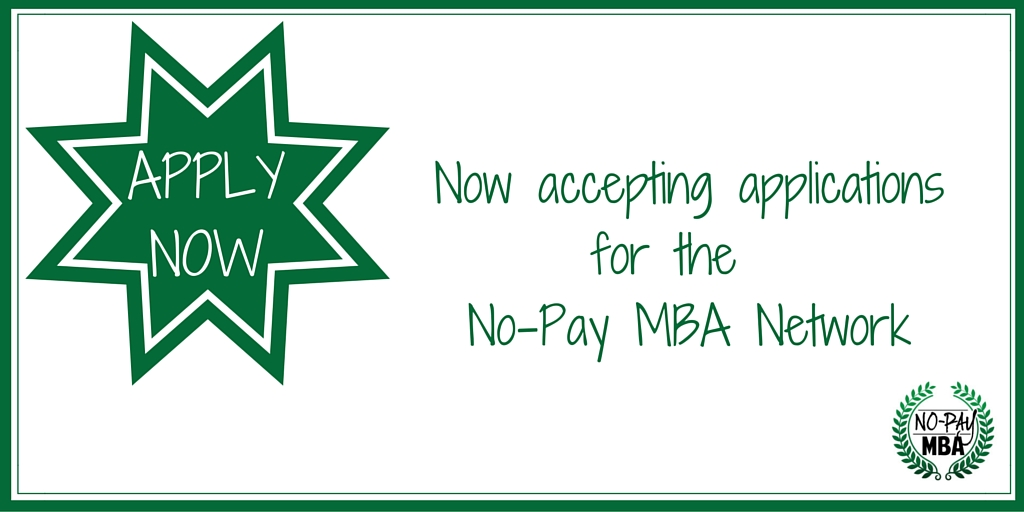
by Laurie Pickard | Jul 13, 2015 | Community and Networking, Most popular posts

How much of the $150,000 - $200,000 that MBA students in top programs spend on business school is for the value of having a great network?
A third? Half?
While we may not be able to pinpoint a dollar-value for the business school network, we can probably agree that it is a significant part of the value of attending an MBA program.
That’s why when I started my project to get the equivalent of an MBA using free massive open online courses (MOOCs), I knew that I would need to be deliberate about building a great network to match the top-tier education that had suddenly become available for free.
Here’s how I did it - and how you can build a network to rival any business school grad’s.
Choose what you want to be known for
You don’t have to be the first, the only, or even the best at what you’re passionate about in order to engage in the conversation; I’m certainly not the first person to suggest that it’s possible to get a business education outside of a university. I’m not even the first person to think of getting an MBA equivalent using MOOCs.You do, however, have to put yourself out into the world, even if you don’t feel totally ready. When I began blogging about using MOOCs to get a business education, I didn’t yet have any credibility in the business world. Over time, I’ve managed to turn my website into an excellent lead-generator for connecting with fellow students, advisors, and potential employers. Now it’s just as likely that I’ll be contacted by a fellow ed tech entrepreneur as the other way around. But it didn’t start out that way.
To start growing your network, begin by identifying what you want to be known for. Then work on bringing your public persona in line with your aspirations. This sounds daunting, but it doesn’t have to be.
Comment on blog posts, share articles on social media, tweet about what’s happening in your field, guest post on a blog. Create your own blog or website, or just rock your social media profiles. If you don’t feel totally confident at first, that’s okay. Confidence comes later. Just get started.
Approach networking as relationship building, not trophy hunting
I’ve gotten some amazing publicity, and I’ve been fortunate to get to talk to some of the luminaries of education, people like edX CEO Anant Agarwal. But networking is not trophy hunting.
What has made my network great is engaging with people again and again, finding out where my contacts’ goals align with mine, and being genuine and helpful. That approach has paid off a thousand fold.
A write-up is nice, but the chance to build a new relationship with someone who shares my passion for tech-enabled business education is better.
Your network should include a mix of peers, mentors, and people who can connect you to opportunities. The thing is, you don’t always know which are which. Don’t neglect building relationships with your peers just because they might not be able to help you today. Opportunities can arise from many places. By the same token, don’t be afraid to circle back to big shots you’ve been fortunate enough to make contact with.
Be a human online
The internet can feel impersonal, but I’ve learned that you can change your experience of the internet by treating all interactions as human ones. It’s incredible how far you can get with people when you approach them as human beings, even if you’re writing through a contact form.
My network includes many people I have never met face to face who are nonetheless trusted advisors, collaborators, and friends.
For starters, your LinkedIn profile should include a personal description that doesn’t make you sound like a resume-writing robot.
Next, when someone’s work inspires you, don’t be afraid to reach out to let them know. This goes especially for people who are building something from scratch. My experience is that these are the people who are most receptive to engaging with those who care about the work they’re doing. I’ve managed to make personal connections with many entrepreneurs, writers, and professors whose work I admire, simply by reaching out online in a way that is respectful, appreciative, and human.
Don’t be afraid to be one of the first people dancing
Derek Sivers gives a great TED Talk in which he breaks down how social movements start, using a fantastic video that begins with one guy dancing at a concert. The first person to start dancing seems crazy, the next few to join in risk looking foolish alongside him, but then suddenly everyone joins in. New projects have a similar trajectory.
Being one of the first people dancing - while you’re still visible and exposed - can be scary, but it can also lead to great rewards. No one is building a future on dancing at a concert, so the metaphor breaks down there, but many of the most exciting new companies are built on communities and social movements. Being one of the early joiners can pay off in a big way.
In my case, I am that person dancing alone in a field. Or at least I was. Some people have started dancing with me, but we’re still a small enough group to be able to know one another personally. If you find a movement you can get excited about, don’t be afraid to join in at an early stage.
If you’re inspired by No-Pay MBA’s project of re-imaging business education, taking the content and the people and the resources that are out there and putting them back together as a new breed of business education, then I invite you to join in.
In the spirit of this entire project, I am excited to share my network with you and to build it further with your help. I am looking for those peers, mentors, and providers of opportunity who share my enthusiasm and a desire shape the future of business education.
Will you be one of them?
by Laurie Pickard | May 11, 2015 | Community and Networking
It’s widely accepted that one of the most valuable components of a traditional MBA is the business school network. For aspiring entrepreneurs, some of the most valuable connections in that network are peers who may one day become co-founders or business collaborators.
After the degree question, one of the questions I am asked most frequently about my No-Pay MBA is whether I am missing out on MBA network. The answer? Not at all! Over the course of my studies, I have built an incredible network of MOOC MBA students, ed tech entrepreneurs, and others.
Even without the advantages that come from blogging and being covered by the media, I believe it is possible for you to build an incredible network to go along with your MOOC-based business studies, particularly if you are interested in entrepreneurship or in working for a startup.
To illustrate this point, I’d like to introduce you to Kevin Meldau.
Kevin Meldau, Founder of Global Teaching Adventures
 I met Kevin when he reached out to me to explore possibilities for collaboration. Kevin is a natural entrepreneur. Trained as a graphic designer, he worked for several years in graphic design, including on some very high-profile projects. But while he enjoyed the design aspect of the work, he found the overall work environment too restrictive.
I met Kevin when he reached out to me to explore possibilities for collaboration. Kevin is a natural entrepreneur. Trained as a graphic designer, he worked for several years in graphic design, including on some very high-profile projects. But while he enjoyed the design aspect of the work, he found the overall work environment too restrictive.
So, a few years into a very promising graphic design career in his native South Africa, he ditched it all and moved to Thailand with a backpack and little else. After trekking around the country for several months, Kevin started to notice that schools in many smaller towns were desperate for English teachers. Again and again, in town after town, he was asked if he would be willing to provide some instruction to students who had never interacted with a native speaker of English.
Kevin wanted to help, but by himself he could only work with a limited number of schools at a time. He saw an opportunity both to help out more schools and to provide travel experiences for English-speakers with a desire to explore Asia. Fast forward a few years, and Kevin’s company Global Teaching Adventures trains people to teach English and places them in school in Thailand, South Korea, and China.
“Asian society is class-oriented. If you are poor, there are few opportunities to move up in life. The one concrete path to middle class for lower-income Asians is through learning to speak English,” says Kevin. “I tell all of our English teachers that they should feel proud to be teaching something that is so important in helping to build more prosperous lives.”
As an education entrepreneur, Kevin is always excited about building his business acumen and exploring new developments in his field. MOOC-based business education sits right at the intersection of those two themes, and that is what brought Kevin to me.
In addition to being a successful entrepreneur, a MOOC MBA student, and a key member of my startup team, Kevin is also a brilliant networker. I have learned a great deal from his approach to networking, and I’d like to share some of those lessons.
Below are some tips on building your network during a No-Pay MBA by networking like an entrepreneur, based on Kevin’s methods.
How to Network Like An Entrepreneur
1. Know the trends in your industry.
A first step in networking like an entrepreneur is to understand the trends affecting the industry you are in or would like to move into. What are the potential disruptors? What innovation is taking place? Who is writing and speaking about the industry? Where are those conversations happening? What publications, websites, and discussion forums are most active with conversation about changes in the industry? What is the media coverage of the industry?
Kevin recognized the potential of MOOC education to change his industry. He saw that No-Pay MBA was one of the places where the conversation about MOOC education was taking place, and he wanted to be involved. “I have a feeling that MOOC culture is going to blow up in a big way,” Kevin told me. “Being on the first wave of this really excites and motivates me.”
2. Find your peers.
It’s all well and good to know the names of the CEOs of the most prominent companies in your industry. But don’t start by reaching out to people at the very top. Instead, look for people who are working in the industry at a variety of levels, including people who are at the same level in their careers as you are, or who are just a bit farther along than you are. How do you do that? Search LinkedIn, check out who is active on discussion forums, reach out to people in MOOC courses, or go old school and ask people you know personally if they can introduce you to anyone. Take part in the discussions that are happening, and make connections with people who share your interests.
Kevin and I were both students in MITx’s Entrepreneurship 101 and 102. Business MOOCs in general - and these two courses in particular - are a great place to meet future founders and collaborators, just as Erdin Beshimov suggested when I spoke with him and Professor Bill Aulet about MOOC education.
3. Reach out to people who are building something and make a great first impression.
People who are already building something - whether that be a company, a blog, a website, an online community - are a great resource to have in your network, and they are usually very open to making new connections. The key is to make a good first impression. When Kevin reached out to me, I was immediately impressed with how he presented himself, and I wanted to know more about him. That is exactly the reaction you should strive for when contacting someone you don’t know. Your message should be short, to the point, and professional (i.e. no typos, no grammatical errors). It also helps to include a link to more information so that the person you are reaching out to can choose to learn more about you. That could be your LinkedIn profile, a personal website, or a portfolio.
Cold emailing is stressful, but Kevin recognizes that it can sometimes pay off in a big way. “I don’t do it often, but when I do, I keep the message short and to the point, and I almost never say what I want in the first message. I’ve gotten a positive reaction most of the time.”
4. Express genuine interest, and be helpful.
When people are passionate about something, they enjoy talking with others who share their passion. At the same time, most people are turned off by someone who is clearly trying to get something from them. This certainly goes for startup entrepreneurs, who are full of passion but also totally time-crunched. Therefore, when you reach out to someone, express interest in their work and in learning more about it. Don’t lead with a request for their time or their help. Instead, start by establishing common ground, expressing a desire to learn more, and being helpful rather than asking for anything.
Given his background in graphic design, Kevin was able to offer some graphic design help to me that has been absolutely critical to the launch of my business. (He designed my new logo! Isn’t it cool?) But you don’t need to be a graphic designer to approach networking with a spirit of helpfulness. Helping out doesn’t have to be a big thing either. Sometimes simply making an introduction to someone in your network, providing feedback on something the person is working on, or sending a link to an article you discussed in your conversation is all it takes. When your new connection takes you up on your offer to help, be prompt and professional, and you will go a long way towards cementing the relationship.
5. Build on the connections you’ve already made.
This is where I have been truly impressed with Kevin as a networker. My dream for the No-Pay MBA community is to build a network among MOOC MBA students that is as valuable as the traditional business school network. This is a service I am not even officially offering yet, but seeing how Kevin has engaged with No-Pay MBA’s connections has given me great confidence that such a network can indeed be built. Through the existing No-Pay MBA network, as small and informal as it is, Kevin has found SEO services for Global Teaching Adventures, explored possibilities for an import-export business, and talked with several entrepreneurs in the MOOC space, all by building on our initial connection and shared interests.

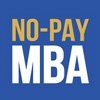


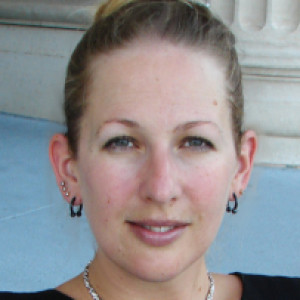





 I met Kevin when he reached out to me to explore possibilities for collaboration. Kevin is a natural entrepreneur. Trained as a graphic designer, he worked for several years in graphic design, including on some very high-profile projects. But while he enjoyed the design aspect of the work, he found the overall work environment too restrictive.
I met Kevin when he reached out to me to explore possibilities for collaboration. Kevin is a natural entrepreneur. Trained as a graphic designer, he worked for several years in graphic design, including on some very high-profile projects. But while he enjoyed the design aspect of the work, he found the overall work environment too restrictive.